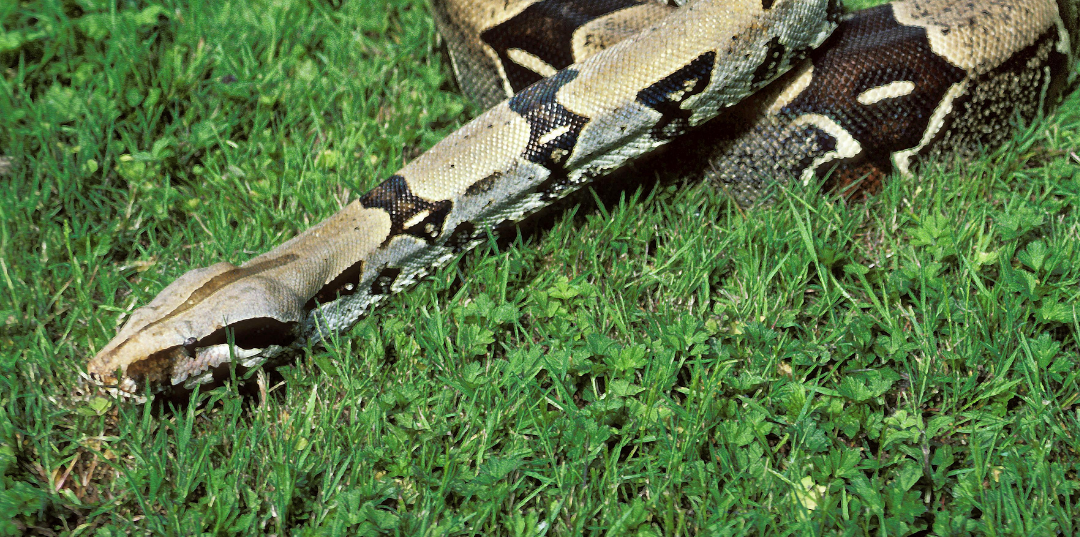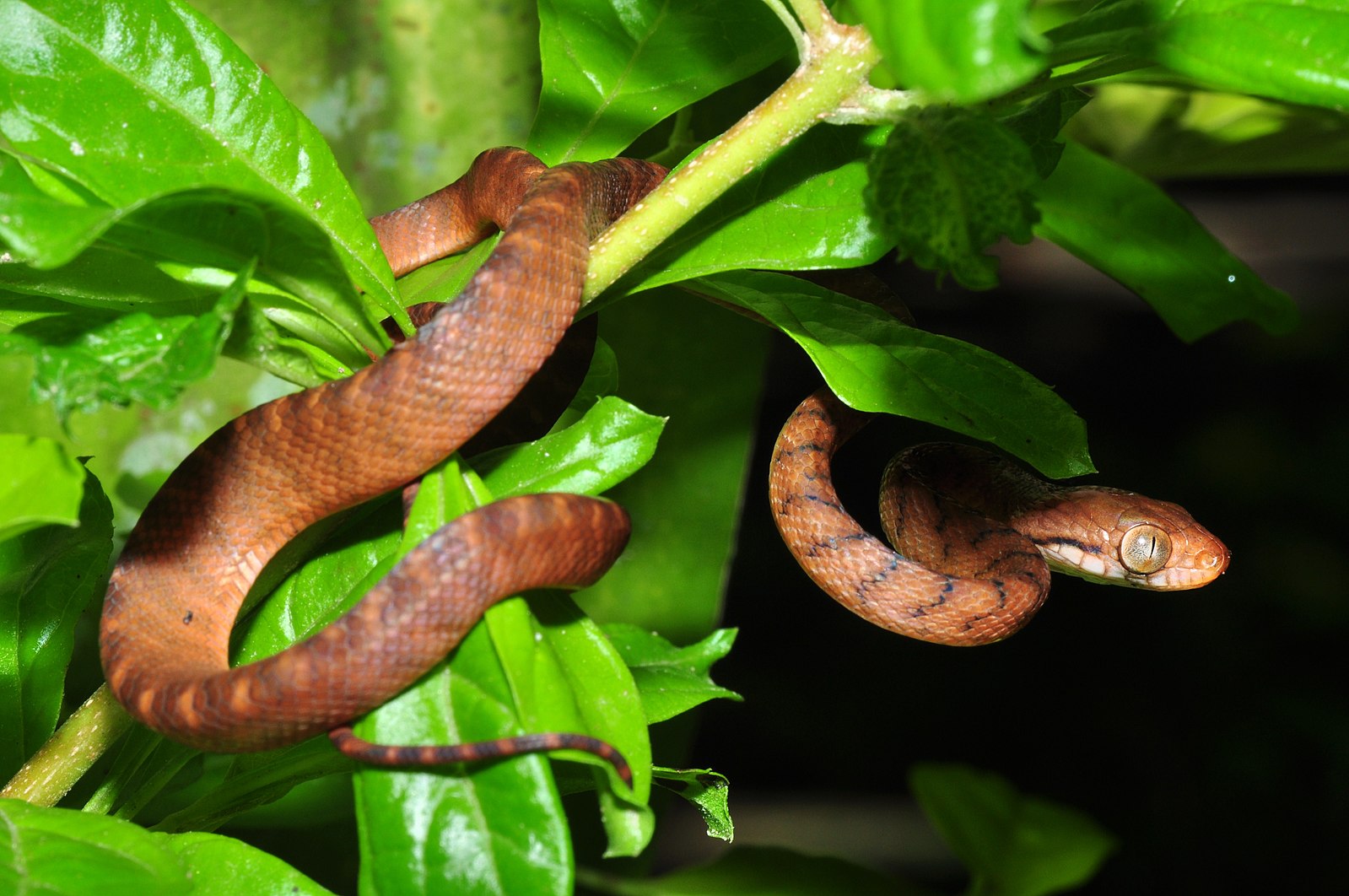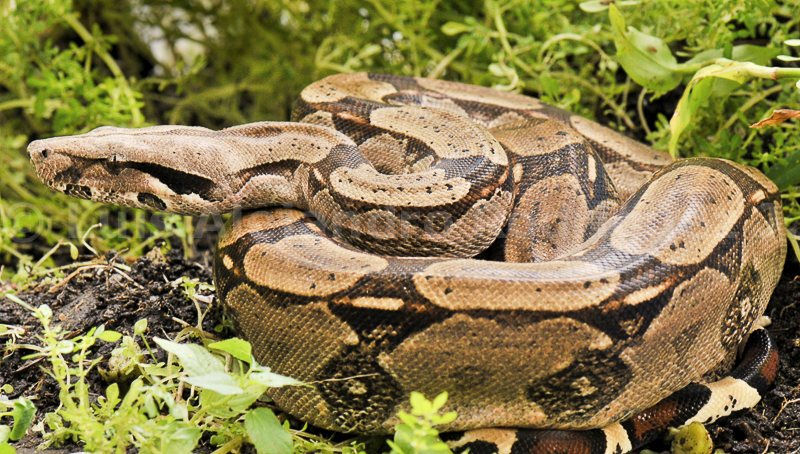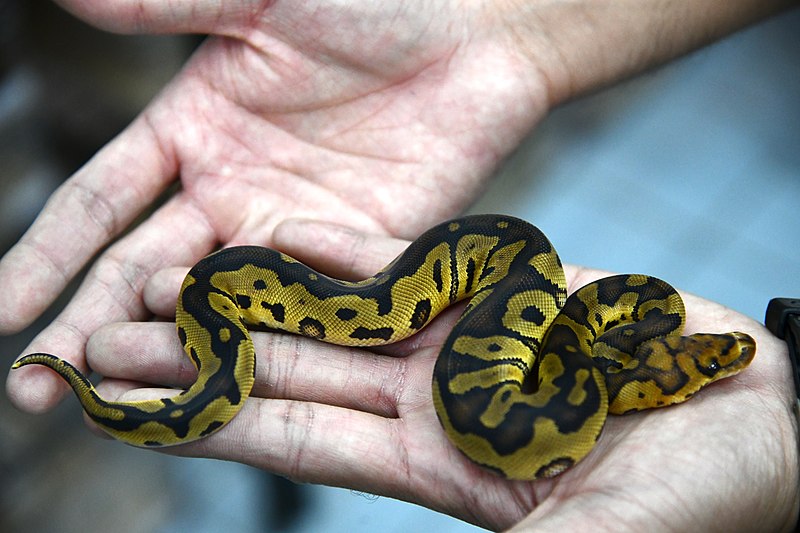
Snakes
In 2018, County workers got quite the surprise when they discovered a live, three-and-a-half-foot ball python near the Hilo landfill. The snake was safely turned over to the Hawai‛i Department of Agriculture (HDOA), but the incident left many people asking: do we have snakes in Hawai‛i? The short answer is…sort of!
Before colonization by humans, Hawai‛i was a bird paradise, lacking many of the types of animals found elsewhere in the world. Due to the remote nature of these volcanic islands, organisms had to travel over 2,000 miles by wind or sea to reach these shores, and then survive and reproduce in a strange and sometimes harsh new environment. The establishment of a species was a rare event, estimated to happen only once every 10,000-100,000 years.
Land-dwelling reptiles were among those excluded by the perilous journey (and their physiology) from starting new lives in Hawai‛i. The geckos and lizards that are common visitors to our windows and rock walls arrived with the assistance of humans. Fortunately, their legless cousins didn’t make the trip, and laws were eventually put into place to prevent the introduction of snakes, recognizing the threat to our native birds.
Stowaway Snakes
As people and cargo move through Hawai‛i, there is always a risk of new introductions. For the last several decades, Hawai‛i has feared the accidental introduction of the brown tree snake, which has wreaked havoc on Guam since their arrival in 1952. With populations estimated at 13,000 snakes per square mile, the brown tree snake has driven seven bird species in Guam to the brink of extinction and caused millions of dollars in damage to the electrical infrastructure.
Concerted efforts to prevent the movement of the notorious stowaway have been highly successful – only one snake made it to Hawai‛i in recent years– but thousands of snakes continue to be deflected at Guamanian airports annually. Stowaways, however, likely account for a minority of the snakes in Hawai‛i. While the risk from Guam is a high priority, snakes from elsewhere continue to show up in Hawai‛i: the Hawai‛i Department of Agriculture estimates that over 100 snakes were collected from 2000-2013, and high profile snake discoveries made the news two dozen times in the last decade. This most recent snake detection was just the first on the Big Island since 2014 when a gopher snake was found in a shipping container in Kea‛au. Last year, a small boa constrictor was found in a shipping container from California that was being unloaded in Honolulu.


Photo (L-R): Pavel Kirillov-cc, Marianique Santos-cc
Pet Snakes are Illegal in Hawai‛i
Most recent captures have been in residential or natural areas, far from ports and often at sizes indicating they escaped or were released after spending some time in captivity here. A call from an alarmed Kea‛au homeowner in 2009 led to the discovery of a 6′ boa constrictor in a garage. In 2011, a 9′ boa constrictor was captured by hunters in Waipahu, O‛ahu, and in 2013 a pedestrian found a rainbow boa cruising through the streets of Chinatown. A 4-foot ball python was captured on a coffee farm in Ka‛anapali, Maui, in 2016. In 2017, a jogger found the body of a 5′ boa near a nature preserve in Kaua‛i, just months after a live 7′ boa was found in a Nu‛uanu driveway.
Snakes aren’t the only large reptiles that have turned up in odd places in Hawai‛i. In the 1980s, two caimans were found in the Nu‛uanu reservoir, and in 1991 two dead alligators were discovered in different locations on O‛ahu. In the last two years alone, two six-foot long iguanas were spotted and captured in Waimanalo on O‛ahu. New species of lizards that can pose a serious environmental threat, like bearded dragons and veiled chameleons, continue to be reported across the islands.


Photo (L-R): Luis Rodriguez-cc, Trisorn Triboon-cc
All of these species share something in common: they’re very popular in the pet trade. Non-venomous boas and pythons are two of the most popular kinds of pet snakes and are among the most common showing up in Hawai‛i. These animals are likely not accidental introductions but were intentionally smuggled or shipped to Hawai‛i in violation of state law. While snakes can make great, low-maintenance pets for responsible pet owners in other places, the risk to Hawai‛i’s already threatened ecosystems is far too great to risk the chance of any snake species establishing in the wild.
To encourage misguided reptile enthusiasts to do the right thing, Hawai‛i has offered an ongoing amnesty program for anyone who turns in an illegal animal. The no-questions-asked policy allows individuals to drop off any prohibited animal for free and without fear of punishment at any zoo, Humane Society, or HDOA office in the state. This is a good deal considering that importing or owning a snake can lead to up to 3 years of jail time and fines of $200,000! Pet owners are encouraged to take advantage of the amnesty program and to never, ever release a snake or other reptile into the wild. Healthy animals will not be euthanized but will be sent to an appropriate facility on the mainland.
All Hawai‛i residents should be aware of the threat snakes pose to our native ecosystems and report any sightings of strange reptiles to 643-PEST. In fact, snakes are the only invasive species for which you should call 911! Oh except for one: the Brahminy brown snake, a shy North American native that has established in some parts of Hawai‛i. It looks and acts like an earthworm, living in moist leaf litter and loose soil and under rocks and logs. This tiny non-venomous critter feeds only on introduced ants and termites and has not been observed to negatively impact the Hawaiian ecosystem. But let’s all work together to make sure this guy’s larger cousins never make Hawai‛i a permanent home!
Snakes in the News
- February 2021: A 3-foot long ball python was captured in ‛Aiea and an iguana was captured Waimānalo
- February 2019: HDOA officials confirmed the capture of a corn snake in a Waipahu backyard
- October 2018: A 6-foot boa constrictor was confiscated from a home in Kea’au on the Big Island
- June 2018: Three-and-a-half-foot ball python near the Hilo landfill
